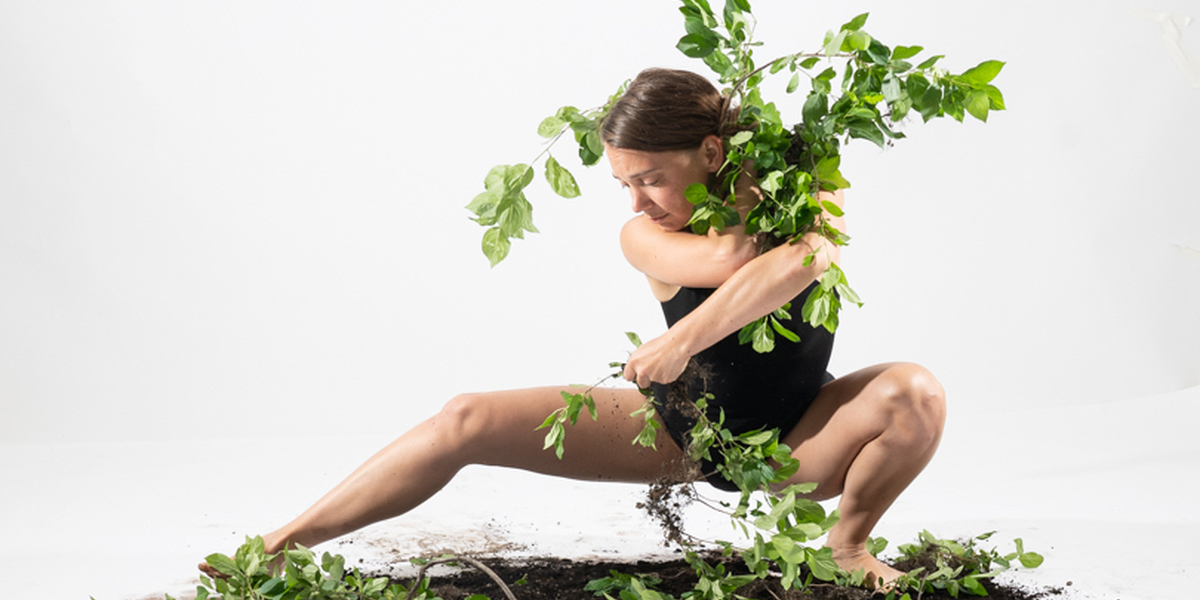
As recipient of the artist-in-residency program at Cedar Creek Ecosystem Science Reserve and the CBS Conservatory, Brenna Mosser is using her years of professional contemporary dance training to creatively explore themes of land use from a variety of perspectives. “How do we approach land, how do we treat it? And how do scientist’s work relate to caring for it – does it bleed into their personal lives?” Mosser has a lot of questions she’s pondering as she fine-tunes her creative vision for an upcoming performance she’s holding in October at one of Cedar Creek’s restored oak savanna sites. It’s too early in her residency for her to know what her end project looks like yet, but she’s brimming with ideas.
Mosser has worked for several years with her dance company, Analog Dance Works, to choreograph interpretive movements inspired by deer, plastic waste, climate change and more. “The way I picture it is as if I'm a sculptor, and there's a block I'm trying to chip away at to get to the essence of what it is I’m curious about.” She’s spent the past year conversing with scientists and staff members, tagging along for fieldwork and events as well as absorbing the life and landscapes of Cedar Creek. On September 10 she’s exploring the idea of science, art and environmental stewardship in a roundtable discussion, after which she will seek out other venues and opportunities to showcase her finalized choreography.
But what draws a dancer to this kind of work in the first place? Mosser comes from a family of scientists and artists always in search of shared language. She has long looked to bridge the two, but it wasn’t until she hit a period of burnout that she altered the trajectory of her career to include the grounding aspects of science and nature. “I spent six years in Europe completely immersed in contemporary dance, and I was exhausted,” says Mosser. “But while I was living in France I discovered how connected locals were to their environment and surroundings. It would explode everywhere in their culture and life in a way that I just loved.” Learning to garden in France cemented her interest in a renewed relationship with the natural world.
When she returned to her hometown of Rochester, Minnesota, to heal and rest she began to look for environmental work, eventually landing a position with the Conservation Corps managing a restored oak savanna nestled in the suburban outskirts of town. The work gave her refreshed perspective and provided her the much-needed courage to get back on her (dancing) feet again. “Even though I grew up here, I learned so much about Minnesota's environment. I also got to see a lot of the implications of climate change through the projects we were doing. That was a huge inspiration for Analog Dance Works.”
Performing in Cedar Creek’s oak savanna will be a huge full-circle moment for Mosser, whose conservation work centered around preserving some of the last restored savanna habitats in southeastern Minnesota. Commercial, agricultural and residential land-use often displaces these habitats, but poorly managed savannas without consistent prescribed burning often become overgrown and wooded.
The October performance will be less of a final product and more of a way to invite people into the process. “It’ll be a roundtable discussion. One of the biggest things I try to do as an artist is try to engage with people who maybe don’t feel comfortable coming into a theater. Roundtables are kind of a place where we’ll be able to talk about an aspect of art in relation to science and pick it apart,” says Mosser. “I want to know how it made them feel, what intrigued them?”
Learn more about Mosser's roundtable discussion and other Cedar Creek events.